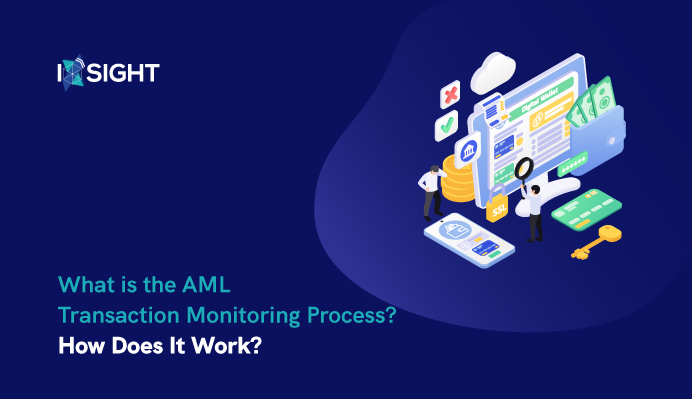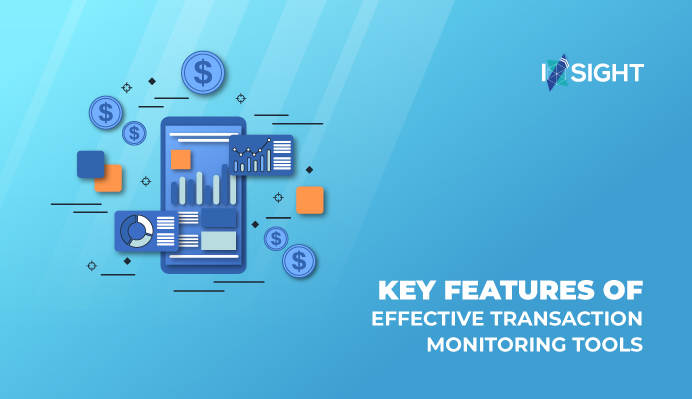Ixsight is looking for passionate individuals to join our team. Learn more

Ixsight is looking for passionate individuals to join our team. Learn more


In the present hectic world of finance, countering the threat of money laundering and financial crime has been a top priority on the agenda of institutions across the world. The AML transaction monitoring is one of the most important systems in ensuring that the financial system is protected against illicit acts. However, what is the AML transaction monitoring process, and how does it work? This extensive guide takes a closer look at the workings of AML transaction monitoring, including its necessity, its main elements, tools, and procedures, along with answering some of the most important questions regarding its usage.
The AML transaction monitoring process is a factual organization of financial institutions, including banks, credit unions, and fintech companies, to recognize, examine, and report suspicious financial activity that can help to locate the involvement of money laundering, terrorist financing, or other types of financial criminal activities. It is the process of real-time or hindsight analysis of customer transactions to determine trends or patterns, outliers, or behavior that has moved outside the norm.
The central aspect of an effective AML compliance program entails transaction monitoring. With sophisticated transaction monitoring systems and AML software, organizations can effectively mark and report outlier behavior and perform adequate compliance with regulatory standards, such as FATF, Bank Secrecy Act (BSA), and other international AML standards.
This money laundering is considered a universal problem as it is estimated that annually $800 billion to $2 trillion worth is laundered globally, according to the United Nations. Banking institutions are leading the charge in this fight, and the inability to develop adequate AML transaction monitoring might lead to substantial fines, reputation loss, and even criminal prosecution. An example is the heavy penalty imposed by regulators such as the Financial Crimes Enforcement Network (FinCEN) in the United States and the Financial Conduct Authority (FCA) in the United Kingdom on non-compliance.
The importance of AML transaction monitoring can be difficult to grasp without taking the time to read our more detailed blog about Why AML Transaction Monitoring Software Is Required. It examines regulatory and operational factors that make it viable to implement the robust AML solutions.
AML transaction monitoring process is a multi-stage model that is intended to detect the risk of illegal financial activity and prevent it. The most important stages of the process are explained below, explaining how transaction monitoring tools and AML monitoring rules help make it effective.
AML Transaction monitoring is based on the gathering and interconnectivity of information about customers and their transactions. This includes:
The data gathered by AML software by integrating other sources into one, centralized repository leads to the ability to view the customer activity in a full context. State-of-the-art facilities incorporate data with Application Programming Interface (APIs) to enable seamless data to be continuously updated in real-time.
AML monitoring rules lie at the core of AML transaction monitoring and outline the requirements for detecting suspicious activity. These rules are specific to the risk nature, customer base, and regulatory needs of an institution. The most common forms of rules are:
Artificial intelligence (AI) and machine learning can be found in modern transaction monitoring tools to increase rule efficiency and minimize false positive rates and match new threats.
The two major modes in operation by the AML transaction monitoring process entail:
The hybrid method of real-time monitoring and batch monitoring is a common approach in most institutions as a way of achieving efficiency and completeness. The AML software automates this process, and no transaction is left unchecked.
The system creates an alert when the data relating to a transaction or pattern breaches an AML monitoring rule. The priorities of these alerts depend on the risk levels, and alerts that are of high risk should be addressed immediately. The alerts are then followed by the compliance teams to establish whether they point to a real suspicious behavior.
The process of investigation presupposes:
The latest transaction monitoring tools eliminate a major part of the investigation effort through the use of visualization tools, including network graphs, which enable easy relationships to be drawn between accounts, transactions, and entities.
In case a suspicions activity is proved, the reporting institution should have to submit a Suspicious Activity Report (SAR) to the corresponding regulatory body, e.g., FinCEN in the U.S., or National Crime Agency (NCA) in the U.K. SARs consist of information about the specific transactions that are subject of suspicions, the related parties, and justification of reporting.
AML software makes the SAR filing more streamlined through the automation of generating reports, which are accurate and follow the regulations in format. Reporting timely and correctly is a very important goal because, in case of delay or failure, the government may take it as an approach of fraud.
The transaction monitoring process of AML is not fixed. The institutions are in a constant process of streamlining their AML monitoring regulations and mechanisms, founded on:
The transaction monitoring tools that apply machine learning dynamically, not only accurately detect abnormal activity across a broad array of transactions and payment types, but also learn over time to enhance the accuracy of the rules used to detect the abnormal activity and thus to lower the cost of those operations.

Selecting the most appropriate transaction monitoring tools may be treated as a defining factor regarding the success of the AML transaction monitoring process. The following are some of the important features:
To read more into the reasons as to why such tools are essential, read our blog Is AML Transaction Monitoring Software Mandatory.
Although the AML transaction monitoring process is necessary, it is associated with difficulties:
The AML transaction monitoring world is changing through the power of technology. There are a number of benefits of using AML software based on AI and machine learning:
As an illustration, the transaction monitoring tools based on AI may pick out the abrasions in cryptocurrency transactions, which has become an increasingly burning issue with digital currencies because of the invisibility of the transactions.
In order to get the best out of the transaction monitoring process of AML, organizations must adopt the following practices:
AML transaction is a fast-developing process that transforms under the influence of technological progress and regulations. The new trends are:
Also ask: What is Real-Time Payments Screening for Sanctions?
Partial Monitoring The AML transaction monitoring process is the most fundamental component in the fight against financial crime, and in terms of efficiency in spotting and reporting suspicious issues. Through transaction monitoring tools, AML monitoring rules, and AML software, financial institutions can remain compliant with rules and regulations, reduce risk, and save their reputation. Although issues such as high false positives and constantly changing schemes do exist, AI and machine learning are becoming rapid and precise in the process.
If you are interested in understanding why effective technology should be considered an essential component in AML compliance, read our related blog Why AML Transaction Monitoring Software Is Required. With an appreciation and an effective AML transaction monitoring procedure, financial institutions can make a decisive contribution to stopping money laundering and the DFS system.
Ixsight provides Deduplication Software that ensures accurate data management. Alongside, Sanctions Screening Software and Data Cleaning Software are critical for compliance and risk management, while Data Scrubbing Software enhances data quality, making Ixsight a key player in the financial compliance industry.
What is AML Transaction Monitoring?
AML transaction monitoring is a systematic process used by financial institutions to detect, analyze, and report suspicious financial activities that may indicate money laundering, terrorist financing, or other financial crimes. It involves real-time or batch analysis of customer transactions to identify patterns, anomalies, or behaviors that deviate from normal activity.
What are common red flags in transaction monitoring?
What triggers a SAR filing?
SARs are filed when investigation confirms suspicious activity that may indicate money laundering, terrorist financing, or other financial crimes. The decision is based on analysis of transaction patterns, customer behavior, and risk factors.
What are the biggest challenges in transaction monitoring?
What are key AML regulations financial institutions must follow?
Major regulations include the Bank Secrecy Act (BSA), USA PATRIOT Act, FATF recommendations, and various international AML directives. Each jurisdiction has specific requirements.
Our team is ready to help you 24×7. Get in touch with us now!